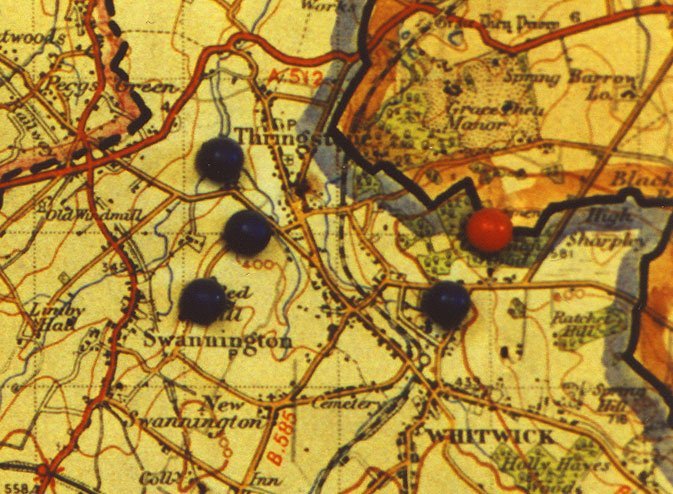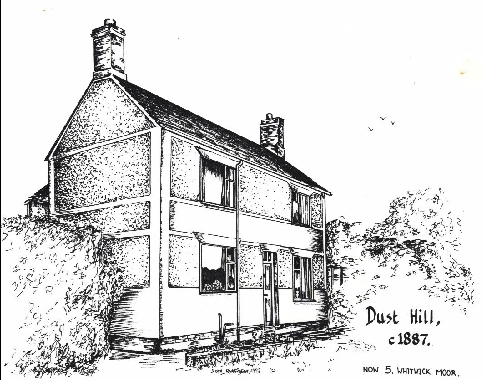
Bombing of Thringstone, October 1940

The Thringstone 'Blitz' occurred some time during October 1940.
The above is part of a Civil Defence damage report map which is stored in the Armoury, Beaumanor Hall. The map used blue pins to show areas hit by high explosive (H.E) bombs, and red pins to indicate areas affected by incendiary bombs.
Over the years, about eighty pins have been lost from the map, including one from the above section. Note the dust dot where a pin has fallen out, indicating that a bomb also landed in the area of Ruby's Chip Shop (this must have been unexploded).

One lady who held vivid memories of the night Thringstone was
bombed was the late Mrs Hilda M Sykes (1908 - 1999). Then a young woman,
expecting her first child, Mrs Sykes lived with her husband Fred, on Whitwick
Moor (then known as "Dust Hill"), her house seemingly in a direct
line with the oncoming aircraft. Her account is mentioned in the local history
publication, "Ours to Defend", page 17...
"We did get a 20 lb bomb in Thringstone. One bomb blew the windows out down the village... As the 'plane came nearer, straight over my house, they dropped another bomb which blew the electric system and flashed up all blue light and I thought we were next !"
Judging by the above map, it is clear that the second bomb landed only a matter of yards from her house, a third and final bomb being dropped further away along Red Hill Lane, Swannington. Mrs Sykes recalled that she had kept a fragment of the bomb for many years after the event.
Clive Cartwright has pointed out that the "20 lb bomb" described by Mrs Sykes is more likely to have been a 50 kg bomb! This was the smallest H.E bomb used by the Luftwaffe and anything smaller would have been the 1 or 2 kg incendiary bombs, which varied in design to cause as much fire damage as possible.
It is possible that the pilot was returning home from a bombing mission on Birmingham or Coventry and keen to offload surplus arsenal - perhaps strike a colliery.
It is interesting to note that that no mention is made of the Thringstone bombs in the Coalville Times of that period - an omission almost certainly brought about by censorship, the Authorities fearing that such reports would be far too damaging for morale.
I should also like to record for posterity the memories of a gentleman named Stan Pearce, who related to me a story as a lad. During the war he lived in Main Street, Thringstone and told me that some miles away in Derby there was a huge anti-aircraft gun known as 'Big Bertha'. Despite the distance of the gun, Mr Pearce told me that every time it was fired, his bedroom door was sprung from the latch!
Back to Maps Index